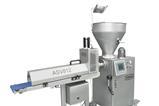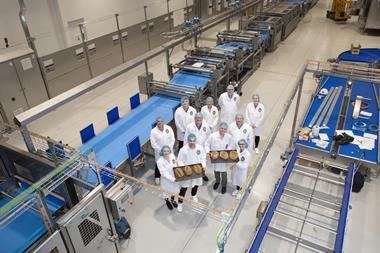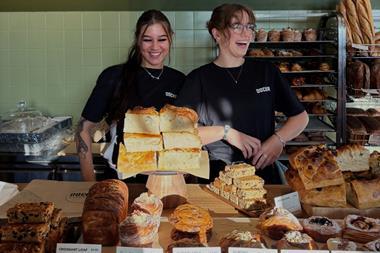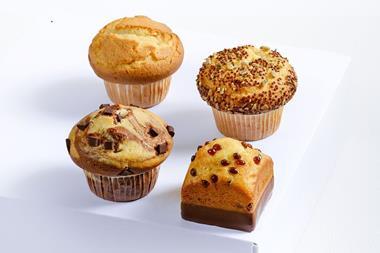With American-style filled cookies growing in popularity in the UK, Reiser outlines the challenges of producing these trend-led treats on this side of the pond.

In a market where consumers face financial challenges, it’s the smaller comforts in life that tend to matter. Referred to as the ‘lipstick effect’, economic downturns often see consumers keen to treat themselves. And, when it comes to food and drink, these small treats can be found in the form of snacks consumed across the day.
A report in The Grocer magazine in December noted that though shoppers continue to feel the pinch, treats remain a ‘must’ with moments of indulgence continuing to be important, especially for younger adult consumers, as a way of destressing.
Among these smaller treats, cookies have never been more popular, according to a report by chocolate firm Barry Callebaut, with consumption increasing by over 9% in 2023 in the UK compared to 2022. “Small indulgences bring comfort in uncertain times,” it notes, adding that 56% of respondents cited ‘treating myself or my household more’ as the top reason why they are eating more cookies. Moreover, the study also noted that more than 90% of consumers said they would be willing to pay at least a little bit more for a premium cookie.

Meanwhile, Mintel predicts cookies will continue to prove popular “as consumers look to escape with even more indulgent flavours”. Cookies and crackers, it adds, “will steal textures, shapes, sensations and formats” from other dessert and bakery categories, with new pairings and indulgent combinations adding extra fun.
US cookie trend
As competition and excitement in this sector of the market ramps up, one notable recent trend emanating from the US is the popularity of American-style filled cookies. Spurred by excitement on social media sites such as Tik Tok and Instagram, multiple recipes for stuffed cookies have been shared over the past year – with fillings ranging from salted caramel to Biscoff.
Moreover, sites aimed at international visitors, such as CondeNast Traveler with ‘The 10 Best Cookies in New York’ and Time Out with the ‘Best Cookies in NYC’, point to some of the latest cookie trends happening in the Big Apple. And, as with many sweet treat trends that take place in the US, the interest in filled and sharing cookies is beginning to be observed, watched, and followed in the UK.
At equipment manufacturer Reiser, UK bakery specialist Gary Fox reports that a number of players in the UK’s baking industry have recently shown interest in replicating American-style filled cookies. “We’re talking about a very big cookie puck – around 150g,” he says. “Driven from the US, it’s a large sharing cookie – for two – which are often sold in foodservice with two cups of coffee, for example. What happens in bakery over in America tends to follow on in the UK market around six months later.”
Fox reveals that enquiries at industry exhibitions, such as IBA in Germany last year, have resulted in the company conducting successful trials on filled cookies at its Milton Keynes test kitchen, as well as in Germany with bakery equipment specialist Vemag.
From trial to production
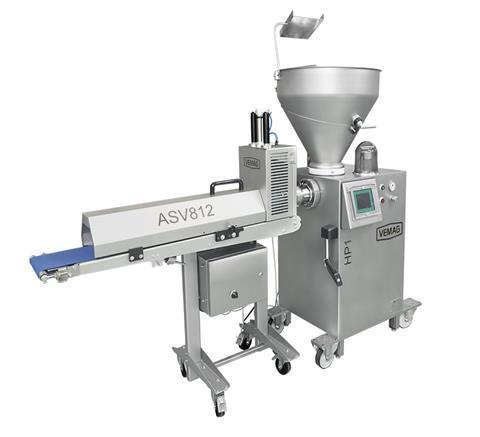
With a medium to large bakery client interested in producing the cookies, Reiser used a larger version of the Vemag double-screw system to portion the outer cookie dough, with a smaller Vemag employed to create a chocolate filling. A special servo-driven attachment, also from Vemag, brought the outer cookie puck together with the chocolate inner to create a filled ball, using encapsulation rather than injecting the filling into the dough. These were then frozen and, ultimately, baked off.
One of the biggest challenges, reports Fox, was that the recipe needed to be resilient to accept the filling without splitting. “It needed to be stable to ensure no leakage during the baking process,” he says. “Once we had figured out this process, we were able to successfully produce the filled cookies.”
Typical cookie weights at this industrial scale are around 50-60g for the outer cookie dough, and around 15-20g of filling. Volumes produced can be upwards of 130 portions a minute for a larger bakery set-up.
While the bakery customer in question has since begun using an industrial version of the Vemag dough portioner, with the products being launched in several foodservice outlets, Fox believes the trend for filled cookies could also catch on with retail bakery customers.
Smaller-scale use
However, the concept is not just available to larger bakery manufacturers. A small Vemag dough portioner, ordered by a small bakery and due to be installed soon, can turn out volumes of around 15 to 20 portions a minute. In this scenario, Reiser ran numerous tests with the bakery company’s recipe, which the customer was then able to send out to its own customers to gauge whether they were interested says Fox. “The response was fabulous,” he says.
On an even smaller scale, a bakery could use a small Vemag system to make the cookie puck, but then create and freeze its own filling – whether chocolate or jam, for example – and hand-finish by rolling the cookie puck around the filling. “That’s one way of getting into the market without too great an initial outlay, thanks to Reiser’s flexible ownership options, designed to help customers spread the cost where they can, and benefit from automating without the upfront cost,” explains Fox.
“So we are talking from entry level right up to industrial kit and everything in between,” he adds. “All of the processing can be tested out at our Milton Keynes customer centre with ingredients and fillings either supplied by ourselves or by the client. We can mix, process, bake, freeze and chill – it’s all there.”
To see the versatile Vemag system in operation, click on the video below:
To find out more about how Reiser can help you achieve your cookie goals, call 01908 585300 or email: salesuk@reiser.com





















